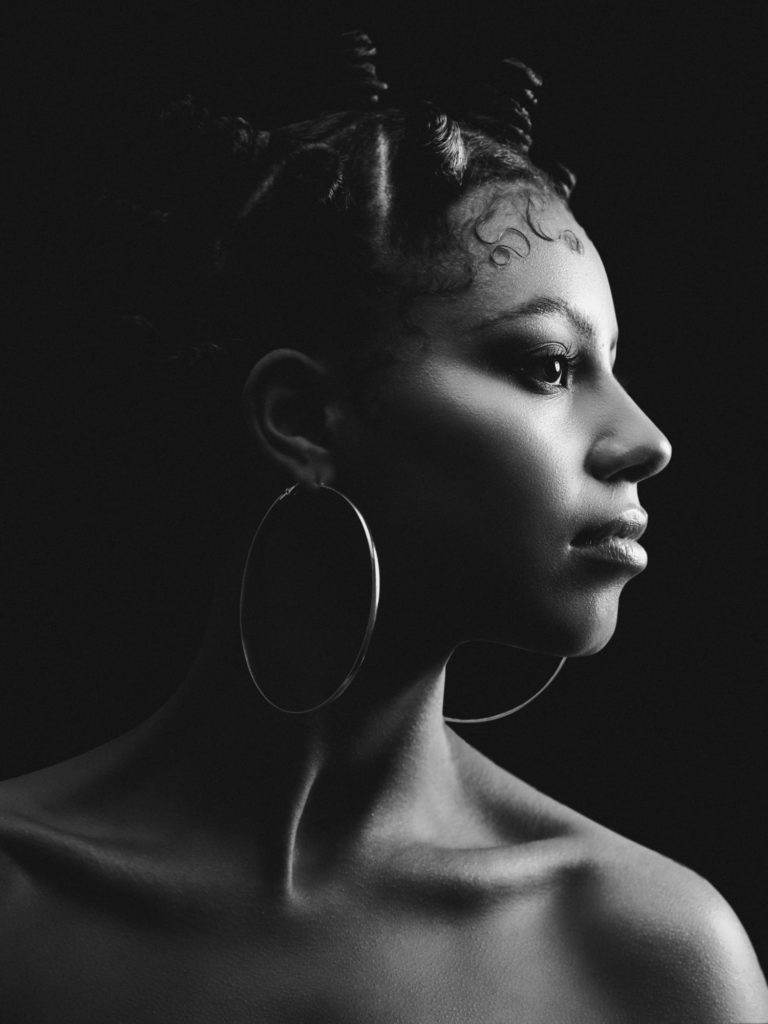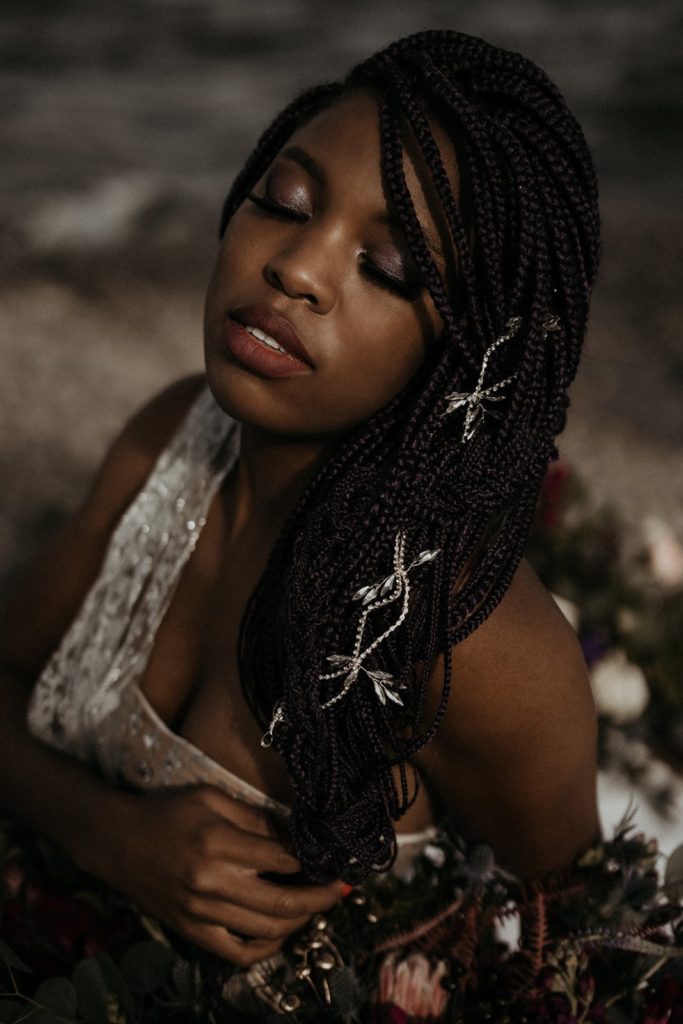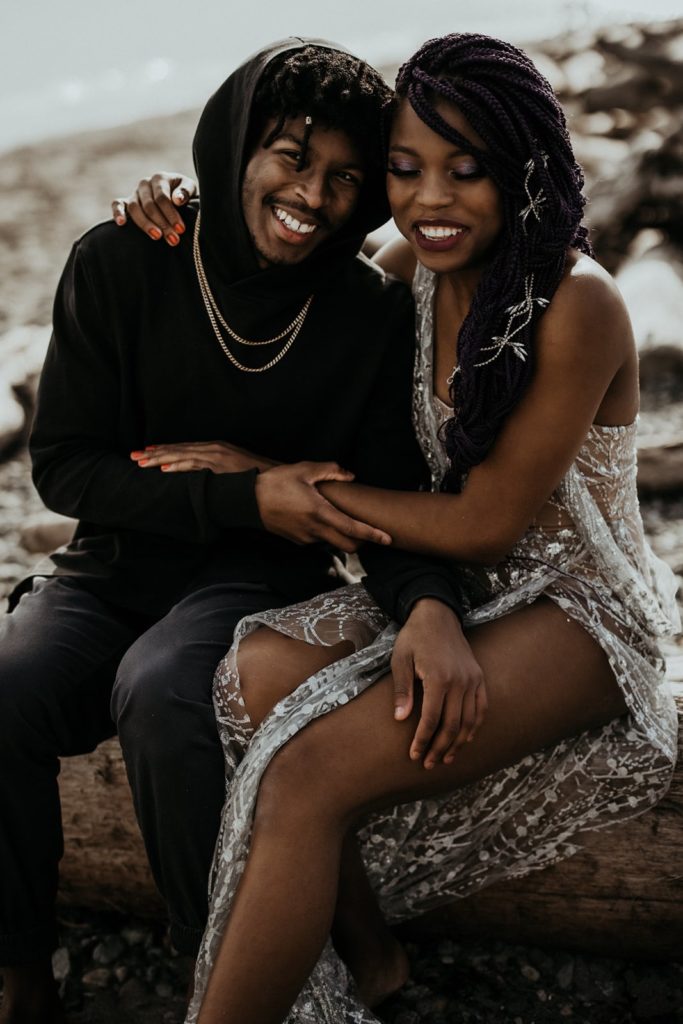
Makeup for Deep Skin Tones
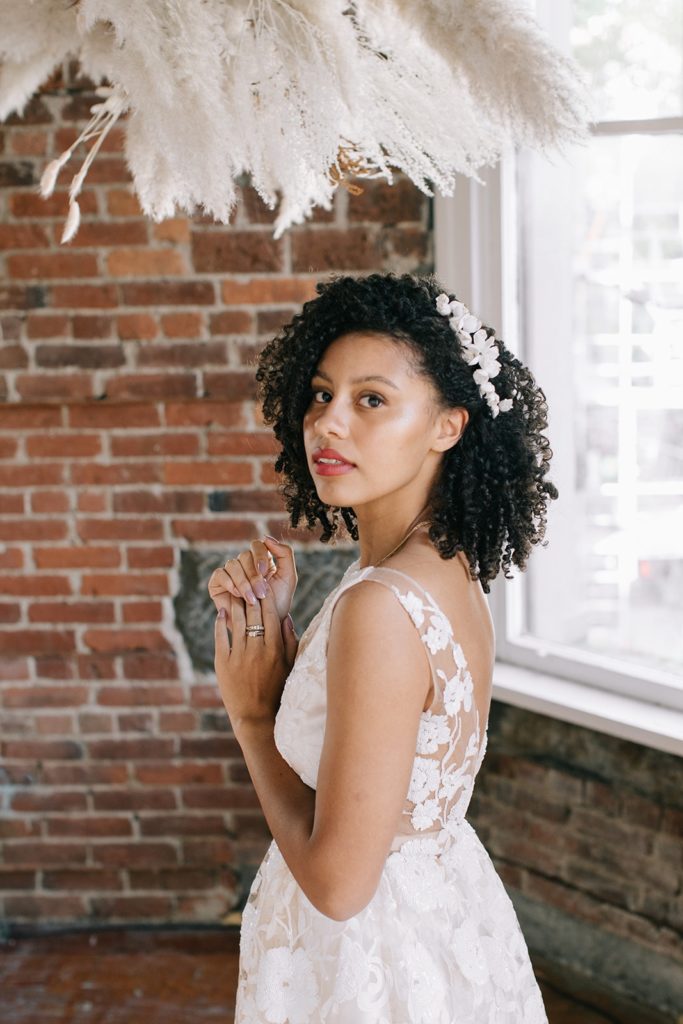
As makeup artists, it’s vital that we’re able to create versatile looks. This includes having access to a wide range of foundation shades, lip colors, and other products in order to make all of our clients beautiful. It also means creating a productive dialogue about relevant ideas. That’s why today, we’re bringing you a post featuring the best makeup tips for deep skin tones (with advice from Black makeup artists and influencers), as well as an interview with model and photographer Sahara on her experience in the industry. In conversation with Sahara, we look at how artists can become more inclusive in their work, allowing the beauty of each client to shine through.
Skin Prep
Step one: prep your beautiful canvas. Makeup artists are painters. Taking the time to prep your skin before makeup application is the key to a flawless finish. Make sure skin is exfoliated and hydrated before applying foundation to avoid looking cakey or dry-looking skin under foundation. You’ll also want to have a mattifying primer handy to keep excess shine at bay. Influencer Kyra Knox has a video full of tips on prepping skin for foundation.

Colour Correct & Foundation Match
With many brands offering expanded shade ranges today, finding a foundation match for deep skin tones is a must. Be attentive when selecting a shade especially when it comes to subtle difference like undertone. An undertone that’s too warm could result in that dreaded “orange” appearance, while one that’s too cool can make the skin appear ashen. Always test foundation directly on skin and look at it in different light sources to choose the best match. You’ll also want to pick up an orange colour corrector for correcting hyperpigmentation on deep skin. For more expert advice, stay on top of industry trends and read up on best practice like this Vogue feature of foundation tips from Black makeup artists.
Showcase Complimentary Colours
Offering a proper range of foundation shades AND all other products is a major part of inclusive makeup artistry. Curate a collection of pigmented eyeshadows, blush, and lipsticks as well as rich bronzers along with gold or copper highlighters. Beauty influencer and makeup artist Jackie Aina has a plethora of expert advice and recommendations for deep skin on her Youtube channel.
Lip Techniques
As makeup artists, we know it’s important to customize lip colors for each client. This means being thoughtful about undertones in the skin. Choose makeup shades that will create magic and play up natural beauty in deep skin tones. Shades like plum, burgundy, chocolate brown, red, and dark nudes should be staples in your kit.
Looking for great products to use on dark-skinned models? Shop from Black-owned brands! Some fabulous options are Pat McGrath, Danessa Myricks Beauty, and Black Opal Beauty.For even more Black-owned beauty brands you should know about, check out this post from Allure.
If you are a hair or makeup artist looking to develop your craft, consider attending workshops like the Textured Hair Workshop in Vancouver. Resources like these are a great way to learn new techniques and expand your skillset in order to be more inclusive.
Industry Leaders: A Conversation with Sahara
Even with knowing what makeup techniques and products are best for models with deep skin tones, it’s our vital role as beauty professionals to stay current and strive to make the makeup industry a more inclusive, accommodating space. To expand on these goals, we spoke to one of favorite models.
Sahara is a Vancouver-based model who’s been featured in publications such as IKON and Shuba. She began modeling as a child but began to further pursue her passion just a couple of years ago. While she most enjoys editorial style fashion shoots, she has experience with almost every type and genre of modeling. She was recently signed to Stranger Agency. As of late, she’s even begun to take up the other side of the camera as a photographer.
During our dialogue, Sahara shared her experience as a Black woman on set, advice for makeup artists when working with people of colour, and the skills that are important to her when it comes to working with makeup and hair professionals.
Check out Sahara’s Insta for more tips & inspiration.
Most-Loved Beauty Products
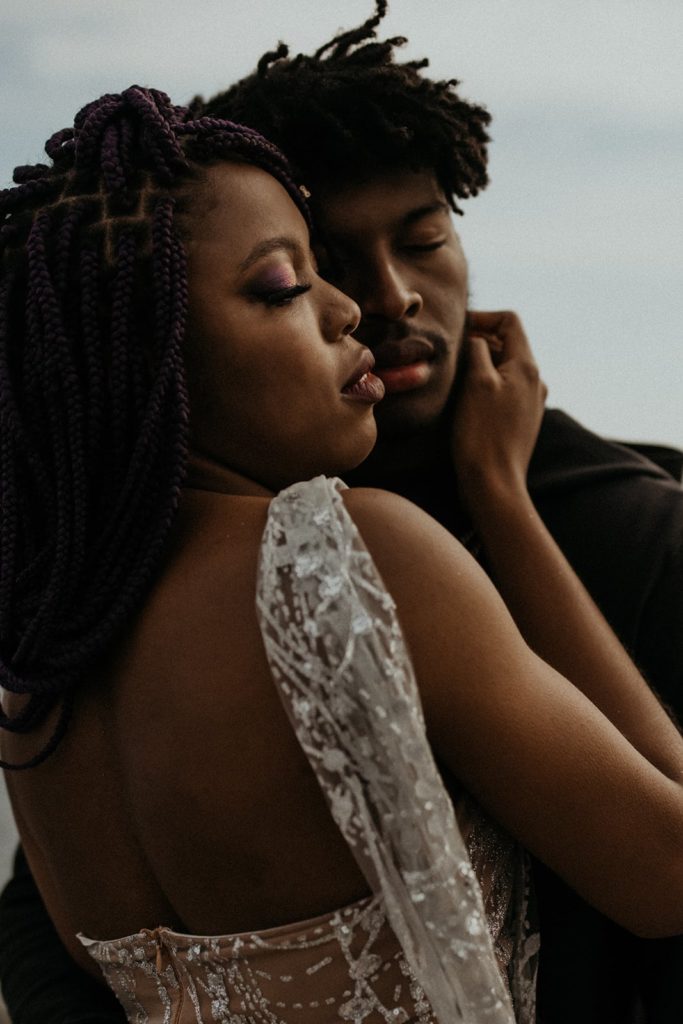
Sahara talks about the joy of experimenting with makeup as well as embracing natural beauty. She lists coconut & shea butter as everyday go-to beauty products, occasionally opting for colorful palettes from brands such as James Charles for a bolder vibe. As makeup artists, it’s just as important to become versatile in the looks we offer. From glam to natural, clients will want different looks depending on the event & preference.
“I love getting glam for special occasions, but I don’t have the energy for all that. Normally I’m doing my own makeup and I think I have a pretty decent natural face. When I have an actual makeup artist, it’s more fun to do really bold and crazy things that I would never really wear out.”
On Evolving Beauty Standards
Kim Kardashian recently talked about representation in the beauty industry, citing Salma Hayek as her visual reference for prom. The way Kim describes her determined trip to the MAC Counter undoubtedly speaks to many who have struggled to see themselves in limited beauty ideals sometimes put forth by the industry. Her experience also reiterates the significance of creating a diverse portfolio with a beautiful range of hair & makeup looks. Clients want to have confidence in your ability to meet their unique needs, especi
“I didn’t see a lot of people that look like me, so I was subconsciously quieting my own personal beauty just to kind of fit in. Nothing was intentional and I love myself, I love my heritage, but I just didn’t even realize until I graduated high school, and that was kind of when I started doing modeling. I got Instagram. I wasn’t really allowed on Instagram in high school, so then I saw other like models and really beautiful women who look like me and I was like, “oh my gosh,” and then, I think from there I got to see how beautiful you can be when you don’t have to be that Eurocentric standard of beauty.”
Elevating Our Makeup Artistry Skillset
One of the challenges Sahara details is a lack of professionalism or knowledge with regards how to work with deeper skin-tones. Being intentional and stocking your kit with the right products is a huge part of being a makeup artist who knows how to deliver for all their clients.
A portfolio that shows range not only shows off your professionalism and skills, it also tells potential clients that you are trained to work with their unique needs. In 2017 the launch of Fenty pushed brands to raise their standards, notability when it comes to shade ranges and undertones. It seems some companies are moving towards inclusivity and diversity. This shift is also moving toward the skillset and education that is backs makeup artistry.
“I know that if the makeup artists who I’ve worked with were great, I always ask them like, “Wow I feel so gorgeous, how do you know all this?” [They say] “I took the extra time.”

